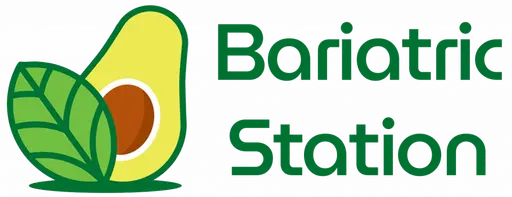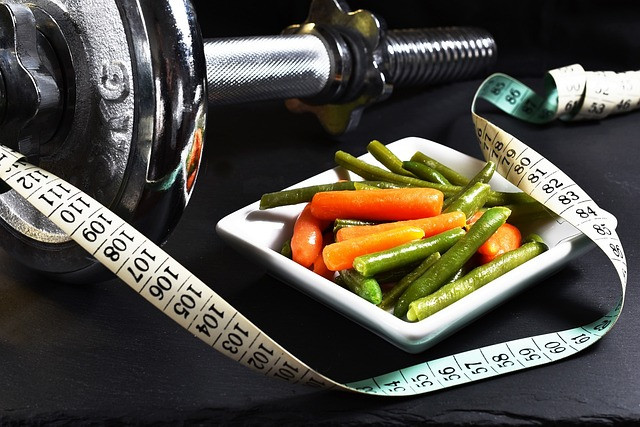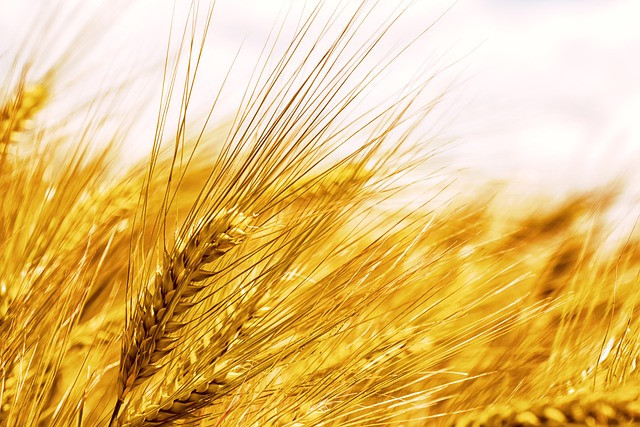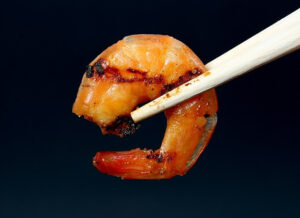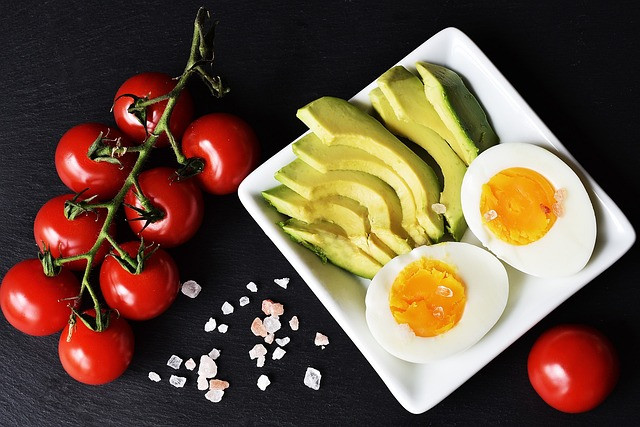Are you ready to make a change in your diet and improve your health? A low carb diet for beginners guide may be the perfect solution for you. By reducing your intake of carbohydrates and focusing on quality protein and healthy fat sources, you can experience weight loss, increased energy levels, and a host of other benefits. In this article, we will explore the basics of a low carb diet and provide tips and resources for getting started as a beginner. Get ready to take control of your health and see real results with a low-carb diet.
What Is a Low-Carb Diet?
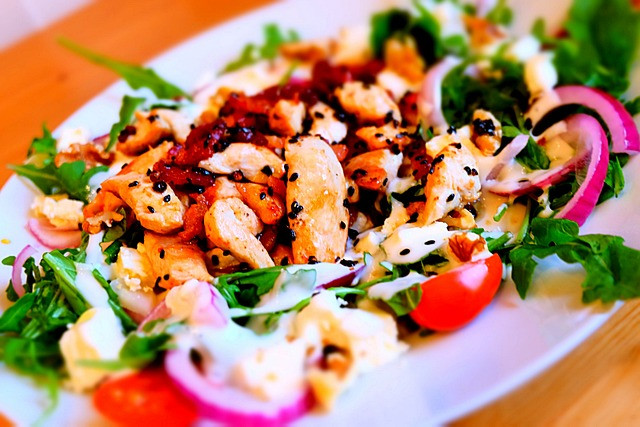
A low-carb diet is a diet that restricts carbohydrates, such as sugars and starches, in favor of protein and fat. A low-carbohydrate diet is generally used for losing weight or improving certain health conditions.
There are many different types of low-carb diets, but all of them restrict the number of carbohydrates you eat. Some low-carb diets allow you to eat certain types of carbs, such as those found in fruits and vegetables, while others restrict all carbs.
Types of Carbohydrates and How They Affect Your Body
Carbohydrates are converted into glucose (blood sugar) in your body. Glucose is the primary source of energy for the cells that make up your muscles and tissues. The type of carbs you choose to consume can have a big impact on your blood sugar levels, which can affect hunger and energy levels. There are three main types of carbs:
Sugar
Sugar is also called a simple carbohydrate. It is found naturally in some foods, such as fruits, and can also be added to foods during processing or preparation. Examples of sugar include glucose, fructose, and sucrose. When we eat foods that contain sugar, the body quickly breaks down the sugar into glucose, which is then absorbed into the bloodstream. This rapid digestion can result in spikes in blood sugar levels and increased hunger.
Starch

Starch is a complex carbohydrate found in foods such as grains, potatoes, and legumes. It is made up of long chains of glucose molecules and is a slower-burning source of energy than sugar. When we eat foods that contain starch, the body breaks down the starch into glucose, which is then absorbed into the bloodstream and used as energy.
Fiber
Fiber is another complex carbohydrate that the body cannot digest. It is found in plant-based foods such as fruits, vegetables, and grains. There are two types of fiber: soluble and insoluble. Soluble fiber dissolves in water and can help to lower cholesterol and regulate blood sugar levels, while insoluble fiber adds bulk to the stool and helps to prevent constipation.
Complex carbohydrates take longer to break down, providing a more steady supply of energy over time. These include whole grains like oats or brown rice, as well as starchy vegetables like potatoes and legumes like beans, peas and lentils. Because complex carbs take longer to digest, they don’t cause spikes or dips in blood sugar levels as quickly as simple carbs do.
Types of Low-Carb Diets
There are a few different types of low-carb diets that you can try:
Ketogenic Diet
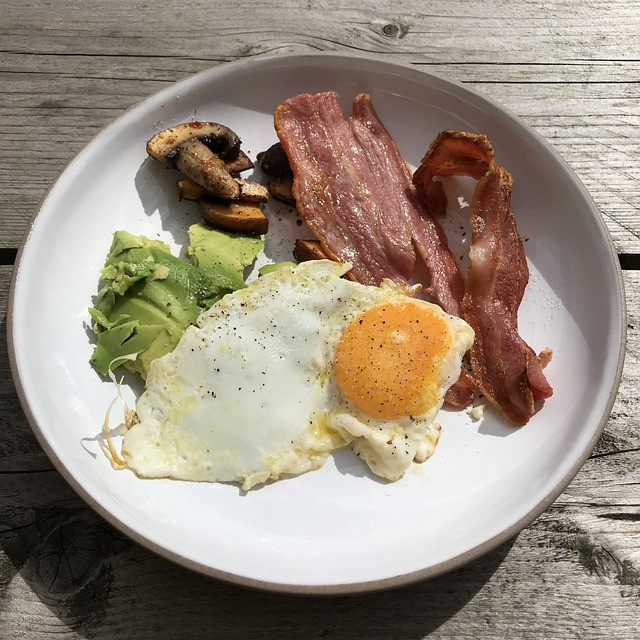
The ketogenic diet, or “Keto diet,” is a popular low carb diet for beginners wanting to lose weight and manage certain health conditions such as Type 2 diabetes. It was developed by Dr. Russell Wilder in the 1920s. On this diet, the goal is to enter a state of ketosis, in which the body burns stored fat for energy rather than relying on glucose from carbohydrates. The Keto diet typically allows for the consumption of around 20-50 grams of carbohydrates per day, with moderate protein and high amounts of fats consisting of 70-80% of daily calories.
Atkins Diet
The Atkins diet is a very low-carb diet that was developed by Dr. Robert Atkins in the 60s. Nowadays, the Atkins diet is available in three different versions that cater to different needs and goals. For those looking to lose more than 40 pounds or who are diabetic, Atkins 20 offers a starting point of 20 grams of net carbs per day. This phase, known as Induction, is ideal for those with significant weight loss. On the other hand, Atkins 40 is designed for individuals who need to shed fewer than 40 pounds and provides a starting point of 40 grams of net carbs per day. Lastly, Atkins 100 is a maintenance plan that allows individuals to maintain their current weight while still following a low-carb lifestyle, with a starting point of 100 grams of net carbs per day.
Paleo Diet

The paleo diet was introduced in the 70s by Dr. Walter L. Voegtlin. The paleo diet is also sometimes referred to as the “caveman diet” or the “stone age diet” because it focuses on foods that were likely consumed by humans during the Paleolithic era. The diet consists mainly of meat, fish, eggs, vegetables, and healthy fats, and limits the consumption of grains, legumes, dairy products, and processed foods. While the paleo diet is not necessarily low-carb, it does tend to be lower in carbohydrates compared to a standard Western diet.
South Beach diet
The South Beach Diet was created by Dr. Arthur Agatston, a cardiologist, in the early 2000s when he published his best-selling book called “The South Beach Diet: The Delicious, Doctor-Designed, Foolproof Plan for Fast and Healthy Weight Loss” It was developed as a way to help his patients lower their cholesterol levels and reduce their risk of heart disease. The diet is based on the idea that carbohydrates, particularly those found in processed foods and refined grains, are responsible for many health problems.
The diet promotes the consumption of lean proteins, healthy fats, and vegetables while limiting carbs and sugar. The diet has three phases: Phase 1, which is the most restrictive and lasts for two weeks, Phase 2, which is less restrictive and lasts until the desired weight loss is achieved, and Phase 3, which is the maintenance phase and focuses on maintaining the weight loss through a healthy lifestyle. The South Beach Diet has become popular due in part to its emphasis on foods that are rich in nutrients and low in unhealthy fats and carbs.
Dukan Diet
The Dukan Diet is a high-protein, low-carbohydrate diet developed in the 1970s by French physician Pierre Dukan. This diet is high in protein and low in carbs and is divided into four phases: Attack, Cruise, Consolidation, and Stabilization.
The Attack phase lasts for 5-10 days and consists of a strict, high-protein diet; The Cruise phase lasts until the dieter reaches their goal weight and involves adding non-starchy vegetables to the diet and alternating days of pure protein with days of protein and vegetables. The Consolidation is intended to help the dieter transition to a more sustainable, long-term way of eating. It involves gradually reintroducing carbohydrates and other foods that were restricted in the earlier phases and allowing for two “celebration” meals per week. The Stabilization phase is the maintenance phase of the diet, in which the dieter is expected to follow the rules of the Consolidation phase indefinitely.
Potential Benefits of a Low Carb Diet for Beginners: from improved Blood Sugar control to Weight Loss
There are a few potential benefits that come with starting a low-carb diet. These can include:
Weight loss
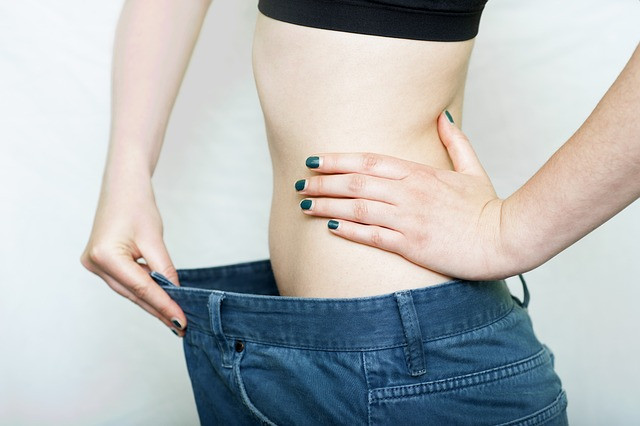
One of the main benefits of a low-carb diet is to make you lose weight. When the body is deprived of its primary source of energy (carbohydrates), it begins to break down stored fat into molecules called ketones, which can be used as an alternative energy source. This process, known as ketosis, can lead to weight loss.
According to a 2006 study with a sample size of 447 individuals, those who were placed on low-carbohydrate diets for 6 months experienced more weight loss compared to those who followed low-fat diets, as determined by random assignment.
Improved blood sugar control
Low-carb diets can help to improve blood sugar control in people with diabetes. By reducing the intake of carbohydrates, the body is able to better regulate blood sugar levels, which can help to prevent blood sugar spikes and improve overall blood sugar control.
According to a 2017 study, participants who followed a ketogenic approach saw a significant decrease in their insulin and oral medication usage, as well as a reduction in their hemoglobin A1c levels, while maintaining high levels of adherence to the intervention for 12 months.
According to another study from 2013, individuals who followed a very low carbohydrate ketogenic diet (VLCKD) experienced greater weight loss in the long term compared to those on a low fat diet (LFD). Therefore, VLCKD could be a potential solution for combating obesity.”
Increased energy levels

Some people report increased energy levels on a low-carb diet. This may be due to the fact that the body is using stored fat as an energy source rather than relying on the quick burst of energy provided by carbohydrates.
Low-carb diets may reduce your sugar cravings
When you eat a high carbohydrate meal, your blood sugar levels spike, which can lead to a sugar craving later on when your blood sugar levels drop. A low carbohydrate diet can help to balance blood sugar levels and reduce sugar cravings. Eating more healthy fats can help to keep you feeling full and satisfied, which can reduce the desire to eat sugary snacks.
A review and analysis of previous studies published in 2014 found that individuals who followed a ketogenic low carbohydrate diet experienced a reduction in hunger and desire to eat. This shows that low-carb diets such as Keto may reduce your cravings for sugary foods.
Be Aware of these Limitations when Starting a Low-Carb Diet
It’s important to be aware that there are some potential limitations to a low-carb diet.
Nutrient deficiencies
Low-carb diets may be low in certain nutrients, such as fiber and certain vitamins and minerals. This can lead to deficiencies if the diet is not properly planned. A 2019 study revealed that during the course of a ketogenic diet, individuals tended to consume less magnesium, calcium, iron, phosphorus, and potassium than recommended amounts. This suggests that low carbohydrate diets may lead to nutrient deficiencies.
It can be difficult to sustain in the long-term

Low-carb diets can be difficult to follow for some people, especially if they are used to eating a diet that is high in carbohydrates. You may find that when you return to eating carbs again, you gain back some of the weight you lost while on the diet. Additionally, people who go back and forth between following a low-carb and high-carb diet may have difficulty regulating their blood sugar levels over time.
The key here is moderation—aim for balance by making sure your daily meals are well-rounded and include adequate amounts of carbs, proteins, fats, and fiber.
Low-carb Diets Aren’t Good for Pregnant and Breastfeeding Mothers
During pregnancy and breastfeeding, it is essential to consume a well-rounded and nutrient-rich diet to support the health and growth of both the mother and the baby. While low carbohydrate diets may be low in carbohydrates, which can provide energy and nutrients for the mother and child, they may also be deficient in certain nutrients such as fiber, vitamins, and minerals that are vital during this time.
Additionally, research has shown that a ketogenic diet may increase the risk of birth defects and anxiety in mice in studies conducted in 2013 and 2015.
You can Keto Flu on Low-carb Keto Diet

Some people may experience negative side effects when starting a low-carb diet, such as the “Keto flu,” which is a group of symptoms that can occur when the body is adjusting to a low-carb, high-fat diet. These symptoms may include headache, fatigue, dizziness, and irritability.
What to Eat on Low Carb Diet for Beginners
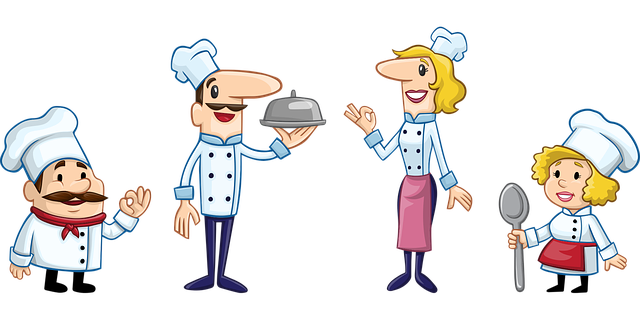
So what can you eat on a low-carb diet? The goal is to fill up on high-fiber, nutrient-rich whole foods such as vegetables, healthy fats, lean proteins, and low-sugar fruits. For example, you could have roasted broccoli and salmon with a side of avocado slices. Or try scrambled eggs with bell peppers and mushrooms.
Meat: Meat such as beef, chicken, pork, and lamb, are allowed on a low-carb diet. It is important to choose grass-fed and/or organic options when possible.
Fish and seafood: Fish and seafood can be a good source of protein. Some options include salmon, tuna, shrimp, and scallops.
Eggs: Eggs are a good source of protein and are allowed on a low-carb diet. They can be cooked in a variety of ways, such as scrambled, fried, or hard-boiled.
Non-starchy vegetables: Non-starchy vegetables, such as leafy greens, broccoli, cauliflower, and bell peppers, have fewer carbs and can be eaten freely on a low-carb diet.
Nuts and seeds: Nuts and seeds, such as almonds, walnuts, chia seeds, and flaxseeds, are a good source of healthy fats and are allowed on a low-carb diet.
Healthy fats: Healthy fats, such as olive oil, avocado oil, coconut oil, and grass-fed butter, are allowed on a low-carb diet.
Berries: Berries, such as strawberries, raspberries, and blackberries, are lower in carbohydrates than other types of fruit and can be included in a low-carb diet in moderation.
Restrict or Avoid These Foods on Low Carb Diet for Beginners

Okay, so what should you be avoiding when to make you’re eating fewer carbs?
Grains: Grains such as wheat, rice, and oats are high in carbohydrates and should be limited on a low-carb diet. This includes bread, pasta, cereals, and baked goods made with grain flours.
Legumes: Legumes, such as beans, lentils, chickpeas, are high in carbohydrates and should be limited on a low-carb diet.
Fruits: While fruits are a healthy choice, they can also be high in carbohydrates and should be limited on a low-carb diet. This includes fruits such as bananas, apples, and mangoes.
Starchy vegetables: Starchy vegetables, such as potatoes and corn, are high in carbohydrates and should be limited on a low-carb diet.
Sugary drinks and desserts: Foods and drinks that are high in added sugars, such as soda, sports drinks, and candy, should be avoided on a low-carb diet.
Alcohol should also be restricted while on a low carb diet, as it is high in carbs and can easily push you over your daily carb intake.
How to Get Started on a Low Carb Diet for Beginners: Tips and Tricks for Success

Getting started on a low-carb diet doesn’t have to be intimidating. Here are some helpful tips to get you started on the right foot.
Determine your daily carbohydrate needs
The amount of net carbs you need will depend on your age, gender, weight, activity level, and health goals. A registered dietitian or healthcare professional can help you determine the right amount of carbohydrates for you.
Plan ahead
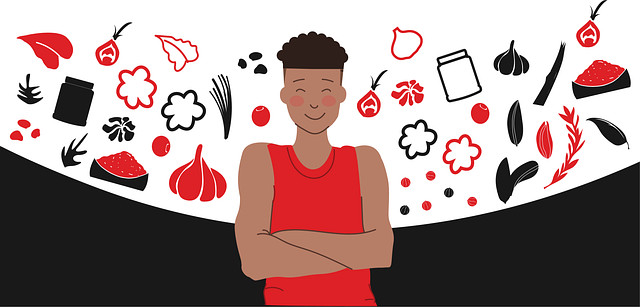
Creating weekly meal plans, grocery lists, and having healthy snacks on hand will help to ensure your success. It’s always tempting to reach for the processed, carb-rich foods when you’re not prepared with healthy alternatives. There are many delicious low-carb meal options to choose from, including meats, fish, eggs, vegetables, and healthy fats. Try to focus on whole, unprocessed foods as much as possible So plan ahead!
Avoid processed foods
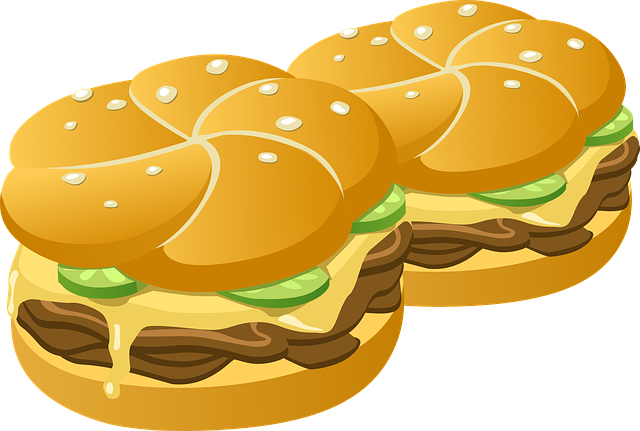
As much as possible, try to stick to whole, unprocessed foods on a low-carb diet. Processed foods are often high in additives and added sugars, which can sabotage your efforts to follow a low-carb lifestyle.
Eat enough protein
Protein is an important macronutrient that is essential for building and repairing tissues. It is important to get enough protein on a low-carb diet, as it can help to keep you feeling full and satisfied and can also help to preserve muscle mass during weight loss.
Don’t be afraid of fats; the healthy fats!
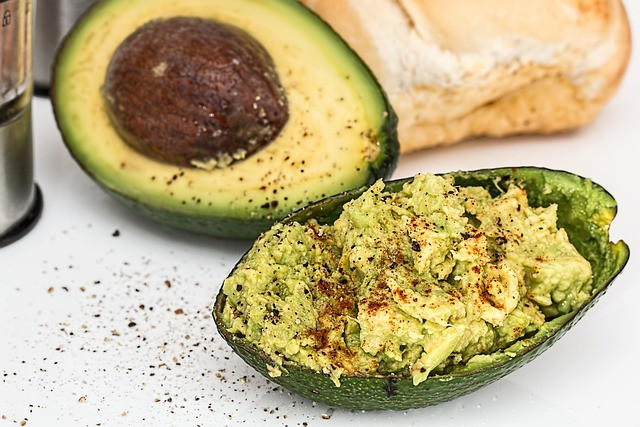
Healthy fats, such as avocado, olive oil, and nuts, can be an important part of a low-carb diet. These fats can help to keep you feeling full and satisfied and can also provide important nutrients.
Don’t skip meals, but also eat when necessary
It is important to eat regular meals, even on a low-carb diet. Skipping meals can lead to low energy levels and difficulty sticking to the diet.
Keep track of your progress
Keep track of your progress by tracking your food intake and monitoring any changes in your weight, energy levels, and overall health. Make adjustments as needed to ensure success. Try using an app like MyFitnessPal or Cronometer to track your progress.
Experiment with different Low-Carb Diets
Be flexible and find what works for you. This doesn’t mean breaking the rules of low-carb dieting, but rather finding what works best for your lifestyle and body chemistry. There are many types of low-carb diets out there, from Ketogenic diets to paleo diets and more—experiment with each to find what works for you in terms of food intolerance, satiety levels, and other factors related to your unique makeup.
Low carb Diet For Beginners Made Easy: Delicious Recipes for every day of the week
![]()
Day 1:
Breakfast: Scrambled eggs with spinach and sliced avocado
Lunch: Grilled chicken salad with mixed greens, cherry tomatoes, and a homemade vinaigrette
Dinner: Baked salmon with roasted broccoli and cauliflower
Day 2:
Breakfast: Greek yogurt with berries and chopped nuts
Lunch: Turkey and cheese roll-ups with a side of carrot sticks
Dinner: Slow cooker beef stew with diced vegetables
Day 3:
Breakfast: Hard-boiled eggs with a small side of fruit
Lunch: Grilled chicken and vegetable skewers with a side of cauliflower rice
Dinner: Zucchini noodles with marinara sauce and ground turkey
Day 4:
Breakfast: Avocado toast with a fried egg
Lunch: Tuna salad with mixed greens and cherry tomatoes
Dinner: Grilled pork chops with roasted Brussels sprouts and a side of roasted sweet potatoes
Day 5:
Breakfast: Smoothie made with almond milk, protein powder, and mixed berries
Lunch: Chicken and avocado wrap with a side of carrot sticks
Dinner: Slow cooker pulled pork with a side of coleslaw made with cauliflower rice
Day 6:
Breakfast: Omelette with spinach, mushrooms, and diced peppers
Lunch: Grilled shrimp salad with mixed greens and a homemade vinaigrette
Dinner: Baked chicken with roasted asparagus and a side of quinoa
Day 7:
Breakfast: Greek yogurt with berries and chopped nuts
Lunch: Turkey and cheese roll-ups with a side of carrot sticks
Dinner: Grilled steak with roasted vegetables
My Top Low-Carb Recipes
Avocado toast with a fried egg
Ingredients:
1 slice of low-carb bread
½ avocado, mashed
1 egg
Salt and pepper, to taste
Optional toppings: diced tomatoes, diced onions, diced peppers, sliced jalapenos, crumbled bacon
Instructions:
Toast the slice of bread to your desired level of doneness.
Spread the mashed avocado onto the toast.
Heat a small pan over medium heat. Add a small amount of oil or butter.
Crack the egg into the pan and sprinkle with salt and pepper. Cook the egg to your desired level of doneness.
Place the fried egg on top of the avocado toast.
Add any desired toppings, such as diced tomatoes, diced onions, diced peppers, sliced jalapenos, or crumbled bacon.
Enjoy!
Greek yogurt with berries and chopped nuts
Ingredients:
1 cup Greek yogurt
½ cup mixed berries (strawberries, raspberries, blackberries)
2 tablespoons chopped nuts (almonds, walnuts, pecans)
Instructions:
In a bowl, combine the Greek yogurt, mixed berries, and chopped nuts.
Mix well to combine.
Serve immediately and enjoy!
Note: You can also add a drizzle of honey or a sprinkle of cinnamon for added flavor. You can also use frozen berries if fresh berries are not available.
Grilled steak with roasted vegetables
Ingredients:
4 steaks (such as ribeye or filet mignon)
2 tablespoons olive oil
2 cloves garlic, minced
1 tablespoon dried oregano
Salt and pepper, to taste
For the vegetables:
1 pound mixed vegetables (such as bell peppers, zucchini, and onions), cut into 1-inch pieces
2 tablespoons olive oil
1 clove garlic, minced
Salt and pepper, to taste
Instructions:
Preheat your grill to medium-high heat.
In a small bowl, whisk together the olive oil, garlic, oregano, salt, and pepper. Brush the mixture onto the steaks.
Grill the steaks for 4-6 minutes per side, or until they are cooked to your desired level of doneness.
While the steaks are grilling, preheat your oven to 425°F.
In a large bowl, toss the vegetables with the olive oil, garlic, salt, and pepper. Spread them out onto a baking sheet.
Place the baking sheet in the oven and roast for 20-25 minutes, or until the vegetables are tender.
Serve the steaks with the roasted vegetables on the side. Enjoy!
Salmon burgers with avocado and mixed greens.
Ingredients:
1 pound salmon, skinned and cut into 1-inch cubes
1 egg
¼ cup almond flour
¼ cup diced red onion
1 tablespoon dijon mustard
1 tablespoon lemon juice
Salt and pepper, to taste
1 avocado, sliced
Mixed greens
2 tablespoons olive oil
Instructions:
Preheat your grill to medium-high heat.
In a food processor, pulse the salmon until it is finely chopped. Transfer the chopped salmon to a bowl.
Add the egg, almond flour, red onion, mustard, lemon juice, salt, and pepper to the bowl with the salmon. Mix until well combined.
Form the salmon mixture into 4 patties.
Grill the salmon patties for 4-5 minutes on each side, or until they are cooked through.
While the patties are grilling, toss the mixed greens with the olive oil and a pinch of salt.
Assemble the burgers by placing the grilled salmon patty on top of the mixed greens, and topping with sliced avocado. Enjoy!
Zucchini noodles with marinara sauce and ground turkey.
Ingredients:
4 medium zucchini, spiralized into noodles
1 pound ground turkey
1 tablespoon olive oil
1 small onion, diced
2 cloves garlic, minced
1 cup marinara sauce
¼ cup grated parmesan cheese
Fresh basil, for serving
Instructions:
In a large pan, heat the olive oil over medium heat. Add the onion and garlic and sauté for 3-4 minutes, or until the onion is translucent.
Add the ground turkey to the pan and cook until it is browned and fully cooked.
Add the marinara sauce to the pan and stir to combine. Bring the sauce to a simmer and cook for 5-6 minutes, or until it has thickened slightly.
Add the zucchini noodles to the pan and toss with the sauce until they are coated.
Serve the zucchini noodles topped with grated parmesan cheese and fresh basil. Enjoy!
Egg muffins with spinach and peppers.
Ingredients:
12 eggs
1 cup spinach, finely chopped
1 red bell pepper, finely chopped
¼ cup diced red onion
¼ cup grated Parmesan cheese
Salt and pepper, to taste
Instructions:
Preheat your oven to 350°F (180°C).
In a large bowl, whisk together the eggs, spinach, bell pepper, red onion, Parmesan cheese, salt, and pepper.
Pour the egg mixture into a muffin tin lined with muffin cups, filling each cup about ¾ of the way full.
Bake for 20-25 minutes, or until the egg muffins are set and the edges are golden brown.
Let the egg muffins cool in the muffin tin for a few minutes before removing and serving. These egg muffins can be stored in the fridge for up to a week and can be reheated in the microwave for a quick and easy breakfast or snack. Enjoy!
Bonus recipe
Low-carb chocolate avocado pudding for a sweet treat! Simply blend together one ripe avocado, one tablespoon of cocoa powder, one tablespoon of honey, and a splash of almond milk until smooth. Add a sprinkle of chopped nuts or shredded coconut on top for added crunch.
Conclusion
So there you have it: a complete guide to starting a low carb diet for beginners. Just remember that it’s important to start slowly and make small changes that you can stick to long-term. And if you ever feel like you need some extra help, be sure to check out our other resources or speak to a qualified health professional.
